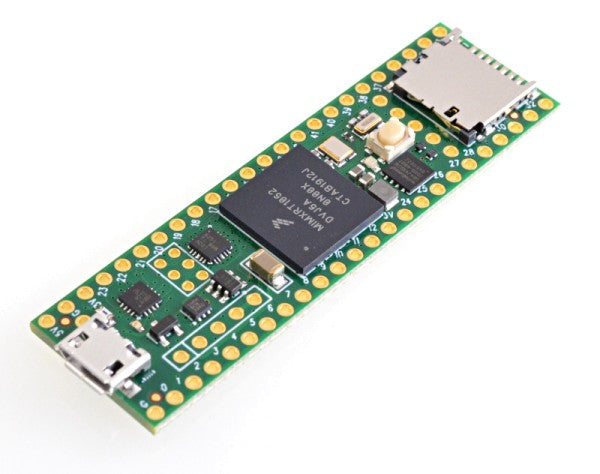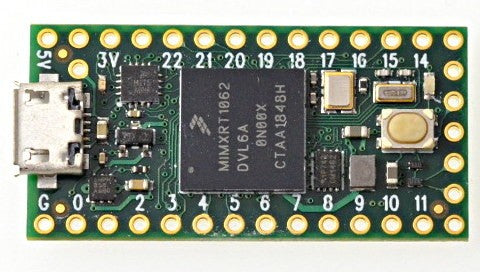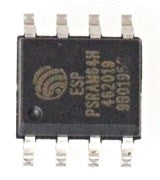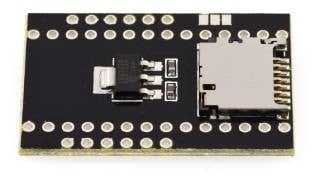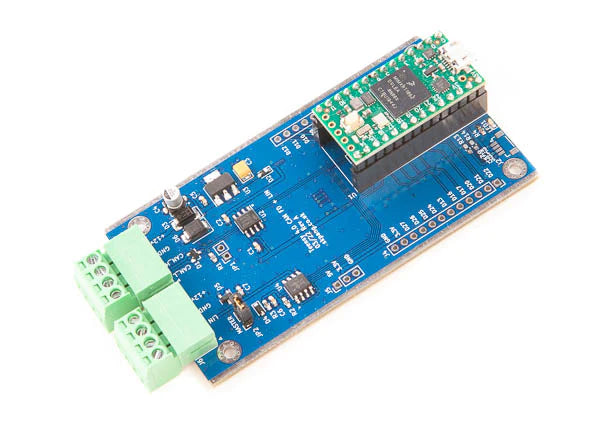The advantages of Teensy microcontroller development boards
- Easy to integrate: Thanks to their compact size, the boards are easy to integrate.
- High performance: Newer Teensy models such as the Teensy 4.0 or Teensy 4.1 are extremely powerful and offer support for high-speed interfaces and higher clock rates (up to 600 MHz).
- Compatible with Arduino: Teensy supports the Arduino IDE, but is often used with the more powerful Teensyduino extension.
- Versatile pins: The boards offer digital and analogue pins, PWM outputs, SPI, I²C, UART, and more.
- USB functions: Teensy supports native USB functions such as USB-MIDI, USB-HID, USB-Serial and even USB mass storage.
Additional protection with the Teensy Lockable option: ideal for OEM projects
For industrial and commercial applications that require increased security and firmware protection, the Teensy Lockable option is very useful. In addition to impressive computing power and versatile interfaces, Teensy Lockable offers additional security.
The lockable version is available with the Teensy 4.0 and 4.1.
The advantages:
- Firmware protection: Protects the source code and firmware from being read or modified.
- Simple activation: The locking function can be activated via the development environment if required.
- Ideal for OEM projects: Perfect for products that are to be delivered without end users having access to the source code.
Teensy fields of application: from audio processing to robotics
Teensy microcontrollers are used in numerous areas and offer the right solution for various problems. With a combination of powerful hardware and versatile software tools such as Teensyduino and the Teensy Loader app, it is easy for developers to realise sophisticated ideas efficiently.
Teensy in audio processing: low latency & high flexibility
Teensy boards are ideal for digital synthesisers, audio effects and mixing consoles due to their high computing power and the availability of audio libraries. Compared to simple Arduino boards, they offer the computing capacity to enable real-time audio processing.
LED control with Teensy: fast processors & generous memory
Thanks to fast PWM and SPI support, Teensy boards are often used for LED installations, especially for large arrays such as WS2812 LED strips. They often outperform other microcontrollers due to their speed and memory size. Art installations, stage shows or interactive lighting projects can be created with Teensy in detail and with little effort.
Robotics and sensor technology: Teensy as an energy-efficient, versatile solution
With their numerous hardware interfaces, Teensy boards are ideal for robotics projects and the integration of sensors. Compared to Raspberry Pi or other single-board computers, they score points with their low power consumption and direct hardware control.
Develop customised USB devices with Teensy: powerful & flexible
Teensy can be programmed as a USB keyboard, mouse or MIDI controller. This enables the creation of customised input devices for gaming, music production or special applications.
All Teensy models at a glance
|
Model |
Processor |
RAM (KB) |
Flash (KB) |
Pins (digital/analogue) |
Extras |
Typical applications |
|
Teensy 2.0 |
ATMEGA32U4 (8-bit, 16 MHz) |
2.5 |
32 |
25/12 |
Basic I/O |
Simple controller |
|
Teensy ++ 2.0 |
AT90USB1286 (8-bit, 16 MHz) |
8 |
128 |
46/8 |
Basic I/O |
More pins, simple projects |
|
Teensy 3.2 |
Cortex-M4 (72 MHz) |
64 |
256 |
34/8 |
General Purpose |
General applications |
|
Teensy 3.5 |
Cortex-M120 (4 MHz) |
256 |
512 |
64/27 |
CAN, SDIO, Audio |
More robust applications, audio |
|
Teensy 3.6 |
Cortex-M180 (4 MHz) |
256 |
1024 |
64/27 |
CAN, USB Host, SDIO, Audio |
Advanced projects, Audio |
|
Teensy 4.0 |
Cortex-M7 (600 MHz) |
1024 |
1984 |
40/14 |
High-speed PWM |
High-speed projects |
|
Teensy 4.1 |
Cortex-M7 (600 MHz) |
1024 + QSPI |
7936 |
55/18 |
QSPI, USB host, audio |
Complex applications, memory-intensive |
The Teensy Loader app: ideal for fast development cycles
The Teensy Loader App is an important tool for programming Teensy boards. It offers a user-friendly interface with which users can transfer new programmes ("firmware") to their board in hex format. The app automatically recognises when a board is connected and allows the upload process to be started with just a few clicks. It also supports the debugging process by providing hints if an upload fails. The Teensy Loader app is available for Windows, macOS and Linux and ensures that users can work with their projects quickly and easily.
Teensyduino add-on: full support for Teensy boards
The Teensyduino add-on extends the Arduino IDE with functions that have been specially developed for Teensy boards. It integrates all the necessary drivers, libraries and tools to make optimum use of the powerful features of the Teensy series. Thanks to Teensyduino, developers can use familiar Arduino commands and libraries and at the same time benefit from the Teensy's extended possibilities. The support for USB applications such as MIDI devices, HID devices and mass storage devices is particularly practical. Teensyduino thus enables a seamless transition for Arduino users who want to switch to more powerful hardware.




